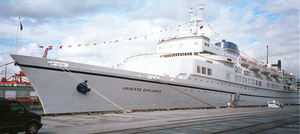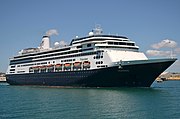
Ingalls Shipbuilding is a shipyard located in Pascagoula, Mississippi, United States, originally established in 1938, and now part of HII. It is a leading producer of ships for the United States Navy, and, as of 2023, is the largest private employer in Mississippi.
Holland America Line (HAL) is a US-owned cruise line, a subsidiary of Carnival Corporation & plc headquartered in Seattle, Washington, United States.

USS Lyon (AP-71) was a type C3 ship of the United States Navy which played an extensive role in naval transportation during World War II. The Lyon was built as Mormactide under a Maritime Commission (MC) contract by the Ingalls Shipbuilding Company of Pascagoula, Mississippi. She was laid down 21 August 1939, and was launched on 12 October 1940; sponsored by Gloria McGehee.

MV Doulos Phos is a retired ocean liner, and former cruise ship that held the record of being the world's oldest active ocean-going passenger ship, serving from 1914 until December 2009. She is now owned by Eric Saw, director and chief executive of BizNaz Resources International Pte Ltd in Singapore. She was previously operated by the German charity Gute Bücher für Alle, and was used as a floating bookshop and missionary ship. The ship has previously been known as the SS Medina, the SS Roma, the MV Franca C, and the MV Doulos. Doulos ended her final cruise in late 2009 at Singapore, with the ship being handed over to her new owners on 18 March 2010. The ship underwent a three year conversion into a luxury hotel that saw the ship mounted on dry land in nearby Bintan, Indonesia and opened in June 2019.

SS Southern Cross was an ocean liner built in 1955 by Harland & Wolff, Belfast, Northern Ireland for the United Kingdom-based Shaw, Savill & Albion Line for Europe—Australia service. In 1975 she was rebuilt as a cruise ship and subsequently sailed under the names Calypso, Azure Seas and OceanBreeze until 2003 when she was sold for scrap to Ahmed Muztaba Steel Industries, Chittagong, Bangladesh.

MSMarella Dream was a cruise ship built in 1986 at the Meyer Werft shipyard in Papenburg, West Germany as Homeric for Home Lines, and their last newbuild to remain in active service. In 1988 she was sold to Holland America Line, renamed Westerdam, and in 1990 lengthened by 36.9 m at Meyer Werft. In 2002 she was transferred to the fleet of Costa Cruises and renamed Costa Europa. In April 2010 she was taken on a ten-year charter by Thomson Cruises, under the name Thomson Dream.

SS Argentina was a US turbo-electric ocean liner. She was completed in 1929 as SS Pennsylvania, and refitted and renamed as SS Argentina in 1938. From 1942 to 1946 she was the War Shipping Administration operated troopship Argentina. She was laid up in 1958 and scrapped in 1964.
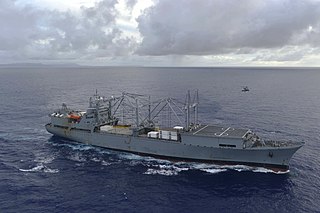
SS Curtiss (T-AVB-4) is one of two Wright-class aviation logistics support ship converted for the Military Sealift Command by Todd Shipyards in 1987.

Project America was the designation for a contract between American Classic Voyages and the Litton Ingalls Shipyard of Pascagoula, Mississippi. The contract was to build two cruise ships, with a gross tonnage of 72,000 each, with an option for a third vessel. The contract had the initial potential value of $1.4 billion U.S. dollars. The first ordered ship would go on to be completed as the Pride of America.
Home Lines was an Italian passenger shipping company that operated both ocean liners and cruise ships. The company was founded in 1946, and it ceased operations in 1988 when merged into Holland America Line. Although based in Genoa, Home Lines was an international company with ships registered in Panama, while the original company chairman Eugen Eugenides was Greek. By the time Home Lines was merged into Holland America, they were one of the most highly regarded cruise lines in the world.

SS California was the World's first major ocean liner built with turbo-electric propulsion. When launched in 1927 she was also the largest merchant ship yet built in the US, although she was a modest size compared with the biggest European liners of her era.
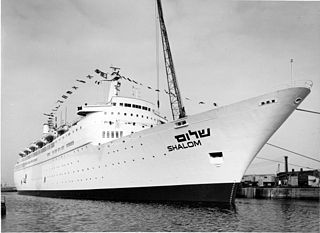
SS Shalom was a combined ocean liner/cruise ship built in 1964 by Chantiers de l'Atlantique, St Nazaire, France, for ZIM Lines, Israel, for transatlantic service from Haifa to New York. In 1967, SS Shalom was sold to the German Atlantic Line, becoming their second SS Hanseatic. Subsequently she served as SS Doric for Home Lines, SS Royal Odyssey for Royal Cruise Line and SS Regent Sun for Regency Cruises. The ship was laid up in 1995 following the bankruptcy of Regency Cruises. Numerous attempts were made to bring her back to service, but none were successful. The ship sank outside Cape St. Francis, South Africa, on 26 July 2001, while en route to India to be scrapped.

MV Kungsholm was built in 1966 by the John Brown & Company shipyard in Clydebank, Scotland as a combined ocean liner / cruise ship for the Swedish American Line. She was later rebuilt as a full-time cruise ship sailing under the names MVSea Princess, MVVictoria, MV Oceanic II. and MV Mona Lisa. In September 2010 she was retired from service as she did not fulfill requirements to SOLAS 2010, becoming the floating hotel Veronica, before being scrapped in 2016.

The Moore-McCormack Lines was a series of companies operating as shipping lines, operated by the Moore-McCormack Company, Incorporated, later Moore-McCormack Lines, Incorporated, and simply Mooremack, founded in 1913 in New York City. It ceased trading on its buy-out in 1982. The founders were Albert V. Moore (1880–1953) (director/president) and Emmet J. McCormack (director/treasurer), with Mr Molloy (director/secretary).
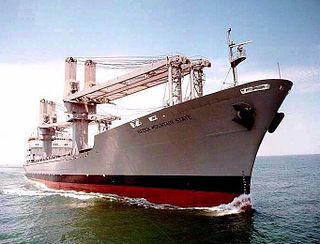
SS Green Mountain State (T-ACS-9) is a crane ship in ready reserve for the United States Navy. The ship was named for the state of Vermont, which is also known as the Green Mountain State.

SS Brazil was a US turbo-electric ocean liner. She was completed in 1928 as Virginia, and refitted and renamed Brazil in 1938. From 1942 to 1946 she was the War Shipping Administration operated troopship Brazil. She was laid up in 1958 and scrapped in 1964.

SS Atlantic was an American-built vessel that operated for 42 years in various capacities. First designated SS Badger Mariner, she was originally built as a freighter in 1953. However, her career as a cargo vessel was relatively short. In 1958, she was rebuilt as a passenger liner. Renamed SS Atlantic, this ship became familiar to many American tourists during the 1960s, making cruises to the Caribbean and Mediterranean.

SS Argentina was an ocean liner launched at Ingalls Shipbuilding in Pascagoula, Mississippi, United States in 1958. The ship was the last ocean liner to be completed in the United States. Sister ship, Brasil had been launched in December 1957. Both ships operated in Moore-McCormack's South American service serving ports on the east coasts of North and South America.

The Type C5 ship is a United States Maritime Administration (MARAD) designation for World War II breakbulk cargo and later a container ship for containerization shipments. The first type C5-class ship was a class of ships constructed and produced in the United States during World War II. The World War II C5-class ship was dry bulk cargo ship built by Bethlehem Steel in Sparrows Point, Maryland. Bethlehem Steel built eight ships in this bulk cargo class and four orders were canceled. The C5-class ship has a 24,250 DWT and was 560 feet (170 m) long. The C5 was mainly used as iron ore carriers. The C5 was needed to replace other ships that sank during World War II. First in her class was SS Venore, USMC #1982, delivered on 20 July 1945. The Type C5-class ship designed to fill the need to move iron ore from Santa Cruz, Chile, to Sparrows Point, Maryland, through the Panama Canal, a round-trip of 8,700 nautical miles . Post World War II, four ships were given C5 class type C5-S-78a, these were roll-on/roll-off container ship built by Ingalls Shipbuilding, Inc. of Pascagoula, Mississippi and operated by the Moore-McCormack Lines. The C5-S-78a had a deadweight tonnage of 16,000 tons.
